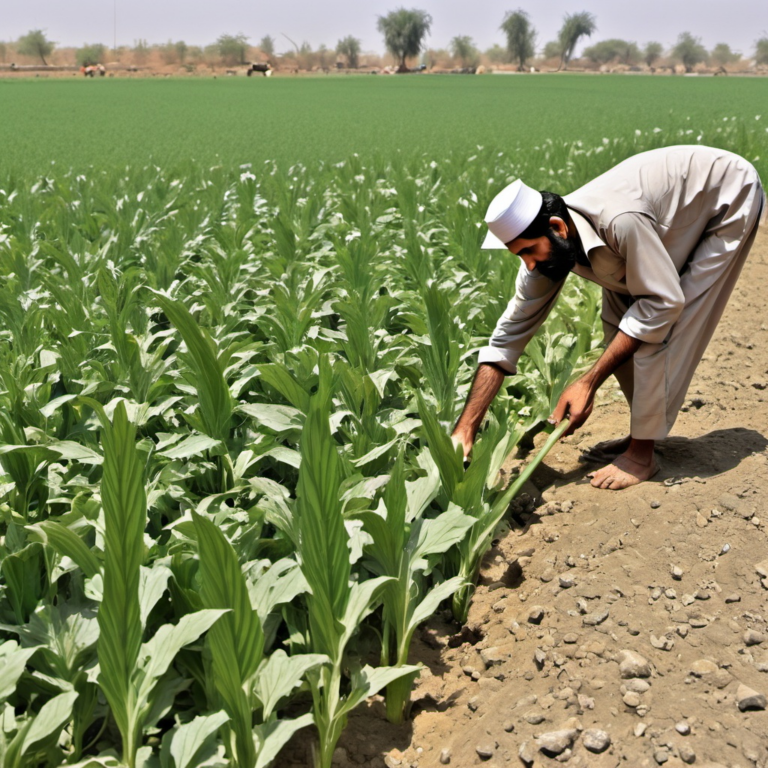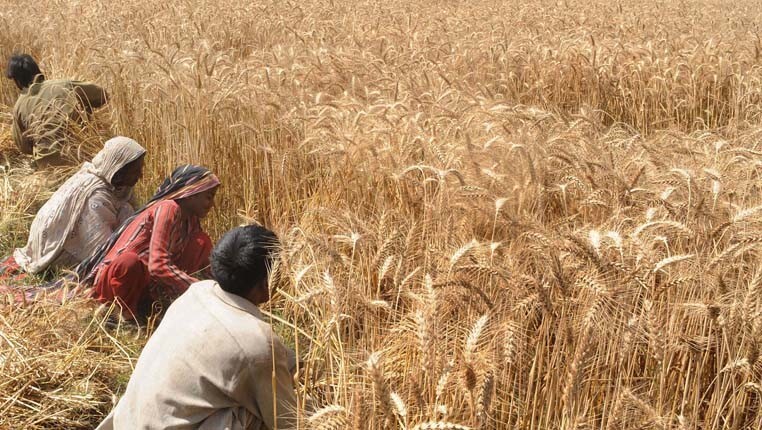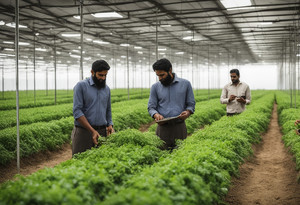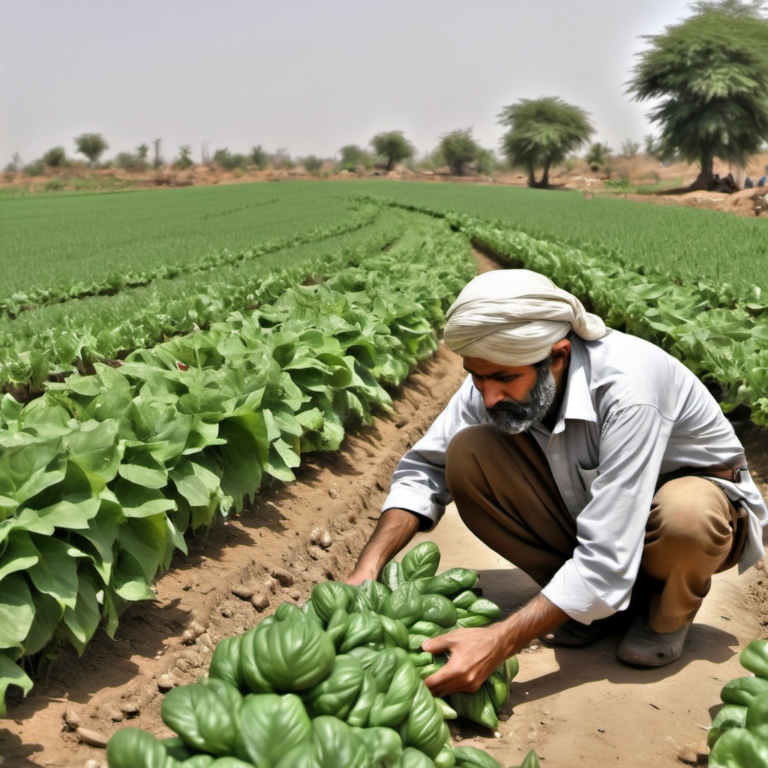“Agriculture as a Business: Unlocking Pakistan’s Economic Potential”
Introduction:
Agriculture has been a cornerstone of Pakistan’s economy, serving as a vital source of employment for millions and contributing significantly to the nation’s GDP. In light of the country’s growing economic challenges, the idea of reshaping agriculture into a structured business model has started to gain momentum. This shift not only holds the potential to modernize the agricultural sector but also offers the opportunity to address socio-economic issues on a larger scale. This article explores the potential advantages and challenges associated with commercializing agriculture and outlines key strategies to make this transition successful.
Benefits of Commercializing Agriculture:
- Economic Growth: Viewing agriculture as a business opportunity allows Pakistan to leverage its vast resources and unlock its economic potential. By adopting modern farming techniques, utilizing advanced technologies, and adding value to products, agricultural productivity can be significantly increased, contributing to overall economic growth.
- Employment Opportunities: The shift to a commercialized agricultural sector will create jobs beyond traditional farming. Employment opportunities will emerge in sectors like logistics, food processing, marketing, and supply chain management, fostering growth across multiple industries.
- Rural Development: Commercial agriculture can act as a catalyst for the development of rural areas. Increased investment can improve local infrastructure, such as roads and storage facilities, and enhance access to services like education and healthcare.
- Foreign Exchange Earnings: Expanding the agricultural export market can generate valuable foreign exchange, strengthen Pakistan’s balance of payments, and reduce its reliance on imports. This would position Pakistan more competitively in the global agricultural market.
Challenges and Considerations:
- Smallholder Farmers: A majority of Pakistan’s farmers operate on small landholdings with limited access to resources. The transition to a commercialized sector must ensure that smallholder farmers are not left behind, as their exclusion could widen socio-economic disparities. Effective policies should be designed to support their integration into the evolving agricultural landscape.
- Access to Finance: One of the primary hurdles faced by farmers is access to affordable credit. Farmers need sufficient financial support to invest in technologies, high-quality seeds, and modern equipment. Expanding credit facilities in rural areas and improving access to financial institutions can bridge this gap.
- Infrastructure Development: The agricultural sector in Pakistan suffers from inadequate infrastructure, especially in transportation and storage. Significant investment in infrastructure is essential to reduce post-harvest losses, improve market access, and facilitate the smooth movement of goods to domestic and international markets.
- Water Management: With Pakistan heavily reliant on the Indus River system, managing water resources effectively is critical. Implementing advanced irrigation techniques and promoting water-efficient farming practices can help address water scarcity and ensure long-term sustainability.
- Market Linkages: Strengthening the connection between producers and consumers is crucial for the success of commercial agriculture. Efficient supply chains and direct access to markets can help farmers fetch better prices for their produce and create a more competitive agricultural environment.
- Policy Reforms: To encourage entrepreneurship and private sector investment in agriculture, clear, forward-thinking policies are required. Reforms must focus on creating an environment conducive to innovation, easing regulatory barriers, and providing financial incentives to agribusinesses.
Strategies for Successful Transformation:
- Education and Training: Equipping farmers with the necessary skills and knowledge is critical to this transformation. Training programs on modern agricultural techniques, business management, and financial literacy will empower farmers to make informed decisions and run their farms like successful businesses.
- Adopting Modern Technology: The adoption of precision agriculture, biotechnology, and sustainable farming practices can significantly improve yields while optimizing the use of inputs like water and fertilizers. These innovations can also reduce environmental impacts and make farming more efficient.
- Value Addition: Developing industries that focus on processing agricultural goods adds value to raw products and reduces wastage. By encouraging agro-processing industries, Pakistan can increase the value of its exports, create jobs, and improve the overall economic returns from agriculture.
- Public-Private Partnerships: Collaborations between the government, private sector, and non-governmental organizations can help pool resources and expertise to drive the agricultural transformation forward. Public-private partnerships can play a key role in modernizing the sector through investments in technology, infrastructure, and capacity-building.
- Incentive Mechanisms: Offering financial incentives, such as subsidies, grants, and tax reliefs, to agribusinesses can spur investment and innovation. These measures will help attract private capital, promote entrepreneurship, and increase competitiveness within the agricultural sector.
- Market Diversification: Diversifying agricultural products and exploring new international markets can reduce the risks associated with price fluctuations and dependency on a few key commodities. A well-diversified agricultural sector is more resilient to global market dynamics and better positioned for long-term sustainability.
Environmental Considerations:
- Sustainable Practices: Fostering sustainable farming methods is essential to protect the environment and ensure the long-term viability of agriculture. Conservation efforts, such as improved irrigation systems, reduced chemical use, and the promotion of organic farming, will safeguard natural resources and mitigate the effects of climate change.
- Biodiversity Protection: Preserving biodiversity and encouraging crop diversification can strengthen the sector’s resilience against pests, diseases, and climate variability. Native crop varieties and traditional knowledge can be integrated with modern practices to create a balanced and sustainable agricultural system.
Turning agriculture into a robust business model offers a path toward economic growth, poverty alleviation, and sustainable development for Pakistan. While the rewards are vast, the transition requires a comprehensive approach that incorporates policy reform, infrastructure investments, and innovation. By focusing on education, technology adoption, value addition, and environmental protection, Pakistan can unlock the full potential of its agricultural sector. The journey ahead is complex, but with the right strategies in place, agriculture can become a powerful driver of prosperity, lifting the nation’s socio-economic standards and fostering a brighter future for its people.







